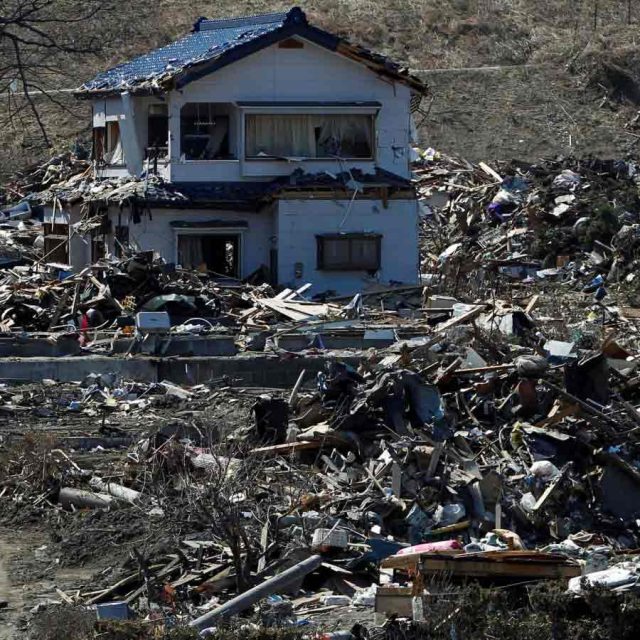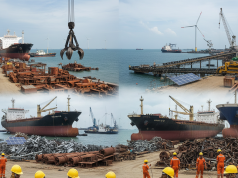TOKYO: A government panel has revised its damage estimate for an anticipated mega-quake in the Nankai Trough off Japan’s Pacific coast. It predicts that an earthquake of up to magnitude 9 will claim about 298,000 lives. Seismologists say there is a roughly 80 percent chance of such a quake occurring in the next 30 years. What does the worst-case scenario look like?
Long and slow tremors that can sway skyscrapers great distances away are called “long-period ground motion.” The Nankai Trough quake is expected to cause such tremors and have a major impact on urban areas in Japan.
The revised report says that furniture in buildings could fall down and copying machines could skate vigorously causing injuries if they are not properly fixed.
It also says that many people on higher floors could try to flee to the ground for safety and that if people rush to the emergency stairs there could be a secondary disaster, such as lots of people falling over each other.
The report also points out that it may take more than one month to confirm the safety of the structure of buildings due to a lack of engineers, making it difficult to enter skyscrapers for a long time.
In order to prevent damage, the report says that it is important to fix shelves in buildings and introduce new systems to check if there are any problems with the structure of buildings.
An expert said: “The magnitude of the recent Myanmar quake was 7.7 and Bangkok is 1,000 kilometers away from the epicenter. In the case of a Nankai Trough mega-quake, the magnitude will be more than 8 and many places will be closer to the epicenter than Bangkok is to central Myanmar. People should take measures.”
Expert panel: “Risks can be further reduced”
Nagoya University Professor Emeritus Fukuwa Nobuo led the panel as chief examiner of the survey. He called on the government and industries to launch new measures to mitigate the risks as much as possible. This includes making all the buildings in the country quake-proof and dispersing the populations of over-crowded cities.

Looking back over the course of the survey, the professor says, “The biggest regret I have is that we failed in substantially reducing the scale of expected risks. Mitigating the scale of the damage is paramount, as the consequences of the Nankai Trough mega-quake could be devastating enough to jeopardize our country’s future.”
He urges the government to set up a monitoring system to share developments in risk management nationwide, so that people can see that the risks can be reduced if they act. He also suggested that Japan needs more government personnel with expertise in disaster management.
Land, Infrastructure, Transport and Tourism Minister Nakano Hiromasa spoke to reporters about the survey.
CREDIT: NHK WORLD-JAPAN











